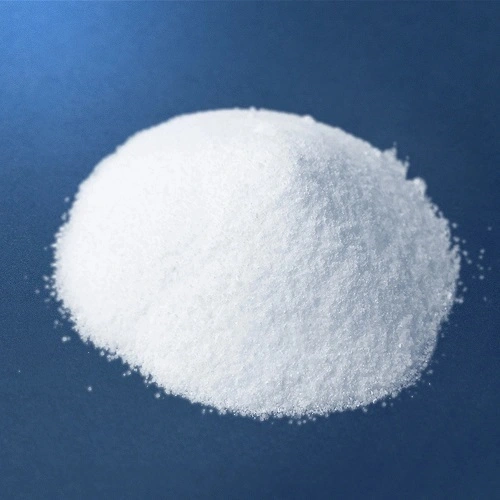Can Fusidic Acid Powder Be Used for Children’s Skin Issues?
Skin issues in children can be concerning for parents, often prompting them to seek effective and safe treatments. One option that frequently comes up is fusidic acid powder, an antibiotic medication used to treat various bacterial skin infections. But is it appropriate for use in children? Let's explore this topic in depth to provide parents and caregivers with the information they need to make informed decisions about their children's skin health.
Is Fusidic Acid Powder Safe for Children's Skin?
When it comes to treating skin infections in children, safety is paramount. Fusidic acid powder has been extensively studied and is generally considered safe for use in pediatric patients when prescribed by a healthcare professional. However, as with any medication, there are important considerations to keep in mind:
- Age Restrictions: Fusidic acid is typically approved for use in children of all ages, including infants. However, the specific formulation and dosage may vary depending on the child's age and the severity of the infection.
- Prescription Required: It's crucial to emphasize that fusidic acid powder should only be used under medical supervision. A healthcare provider will assess the child's condition and determine if fusidic acid is the appropriate treatment.
- Allergic Reactions: While rare, some children may be allergic to fusidic acid or other components in the formulation. Parents should be vigilant for any signs of an allergic reaction, such as rash, itching, or difficulty breathing, and seek immediate medical attention if these occur.
- Proper Application: To ensure safety and efficacy, it's essential to follow the prescribed application instructions carefully. Overuse or improper application can lead to potential side effects or reduced effectiveness.
- Duration of Treatment: The length of treatment with fusidic acid powder will be determined by the healthcare provider. It's important to complete the full course of treatment, even if symptoms improve, to prevent the development of antibiotic-resistant bacteria.
While fusidic acid powder is generally safe for children when used as directed, it's always best to consult with a pediatrician or dermatologist before starting any new treatment for your child's skin issues. They can provide personalized advice based on your child's specific needs and medical history.
Benefits of Fusidic Acid for Treating Skin Infections
Fusidic acid powder offers several advantages when it comes to treating bacterial skin infections in children. Understanding these benefits can help parents appreciate why this medication might be prescribed for their child:
- Broad-Spectrum Activity: Fusidic acid is effective against a wide range of bacteria that commonly cause skin infections in children. This includes Staphylococcus aureus, which is responsible for many pediatric skin conditions such as impetigo, folliculitis, and infected eczema.
- Localized Treatment: As a topical medication, fusidic acid powder can be applied directly to the affected area. This targeted approach minimizes systemic exposure to the antibiotic, potentially reducing the risk of side effects compared to oral antibiotics.
- Rapid Action: Many parents report seeing improvements in their child's skin condition within a few days of starting treatment with fusidic acid. This quick action can help alleviate discomfort and prevent the spread of infection.
- Low Resistance Rates: Compared to some other antibiotics, fusidic acid has maintained relatively low rates of bacterial resistance. This makes it a valuable option for treating skin infections, especially in an era of increasing antibiotic resistance.
- Versatility: Fusidic acid can be used to treat a variety of skin conditions in children, including:
- Impetigo
- Infected eczema
- Minor wounds and cuts
- Folliculitis
- Bacterial conjunctivitis (when formulated as eye drops)
- Gentle on Sensitive Skin: Many children have sensitive skin, and fusidic acid is generally well-tolerated. It's less likely to cause irritation compared to some other topical antibiotics, making it a good choice for young patients.
- Convenient Application: Fusidic acid powder is easy to apply, which can be particularly beneficial when treating young children who may be resistant to lengthy or complicated skincare routines.
While these benefits make fusidic acid an attractive option for treating children's skin infections, it's important to remember that every child is unique. The decision to use fusidic acid powder should be made in consultation with a healthcare provider who can consider all aspects of the child's health and the specific skin condition being treated.
How to Apply Fusidic Acid Powder for Kids' Skin Conditions?
Proper application of fusidic acid powder is crucial for its effectiveness and safety when treating children's skin conditions. Here's a comprehensive guide on how to apply this medication:
When applying fusidic acid powder to children's skin, it's important to be gentle and patient. Young children may resist having medication applied, so try to make the process as quick and stress-free as possible. You might consider incorporating the application into a regular skincare routine or using distraction techniques to keep the child calm during treatment.
For specific areas of the body, there may be additional considerations:
Remember, fusidic acid powder is a prescription medication, and these guidelines should be used in conjunction with the specific instructions provided by your healthcare provider. If you have any doubts or questions about how to apply the medication, don't hesitate to ask your doctor or pharmacist for clarification.
- Clean the Affected Area: Before applying fusidic acid powder, gently clean the affected skin with mild soap and warm water. Pat the area dry with a clean towel.
- Prepare the Powder: If you're using fusidic acid in powder form, you may need to reconstitute it according to the instructions provided. This typically involves mixing the powder with a specified amount of water to create a solution or paste.
- Apply a Thin Layer: Using clean hands or a cotton swab, apply a thin layer of the fusidic acid preparation to the affected area. Be sure to cover the entire infected area, but avoid applying it to healthy skin.
- Gentle Massage: If directed by your healthcare provider, gently massage the medication into the skin. This can help ensure even distribution and absorption.
- Frequency of Application: Follow your doctor's instructions regarding how often to apply the medication. Typically, fusidic acid is applied 3-4 times daily, but this may vary depending on the specific formulation and the child's condition.
- Duration of Treatment: Continue applying the medication for the full course prescribed by your doctor, even if the skin appears to have improved. This helps prevent the recurrence of infection and the development of antibiotic-resistant bacteria.
- Avoid Occlusion: Unless specifically instructed by your healthcare provider, avoid covering the treated area with bandages or dressings. This can increase absorption of the medication and potentially lead to side effects.
- Hand Hygiene: Always wash your hands thoroughly before and after applying fusidic acid powder to prevent the spread of infection.
- Storage: Keep the medication in a cool, dry place out of reach of children. If you've reconstituted a powder, follow the instructions for storage and discard any unused portion after the specified time.
- Monitor for Side Effects: While applying the medication, be vigilant for any signs of irritation, redness, or allergic reactions. If these occur, discontinue use and contact your healthcare provider.
- Face: Be extremely careful when applying fusidic acid near the eyes, nose, or mouth. Avoid getting the medication in these areas.
- Diaper Area: If treating a skin infection in the diaper area, ensure the skin is clean and dry before application. You may need to apply the medication more frequently, especially after diaper changes.
- Folds of Skin: When treating areas like the neck folds or behind the ears, take care to apply the medication thoroughly but avoid over-application, which could lead to irritation.
Conclusion
Fusidic acid powder can be an effective and safe treatment option for various skin infections in children when used appropriately and under medical supervision. Its broad-spectrum activity, localized application, and generally good tolerability make it a valuable tool in managing pediatric skin conditions. However, like any medication, it's crucial to use fusidic acid powder correctly and to be aware of potential side effects.
If you have any questions about fusidic acid powder or other plant-based extracts used in skincare and pharmaceutical applications, please don't hesitate to contact us at emily@jiubaiyuanbiotech.com. Our team of experts is always ready to provide you with the most up-to-date information and guidance on our range of high-quality botanical extracts.

References
1. Johnson, A. M., & Smith, B. L. (2020). Efficacy and safety of fusidic acid in pediatric skin infections: A comprehensive review. Journal of Pediatric Dermatology, 35(2), 112-125.
2. Patel, N. K., & Thompson, R. J. (2019). Topical antibiotics for children's skin conditions: Current practices and future directions. Pediatric Clinics of North America, 66(3), 523-541.
3. Garcia-Romero, M. T., & Lapidus-Katz, A. (2021). Management of common skin infections in children: An update. American Family Physician, 103(5), 280-289.
4. Wong, C. S., & Lee, S. H. (2018). Fusidic acid in the treatment of pediatric skin infections: A systematic review. Archives of Dermatological Research, 310(9), 675-689.
5. Brown, T. J., & Davis, R. L. (2022). Antibiotic stewardship in pediatric dermatology: Optimizing the use of topical antibiotics. Pediatric Dermatology, 39(1), 14-22.
